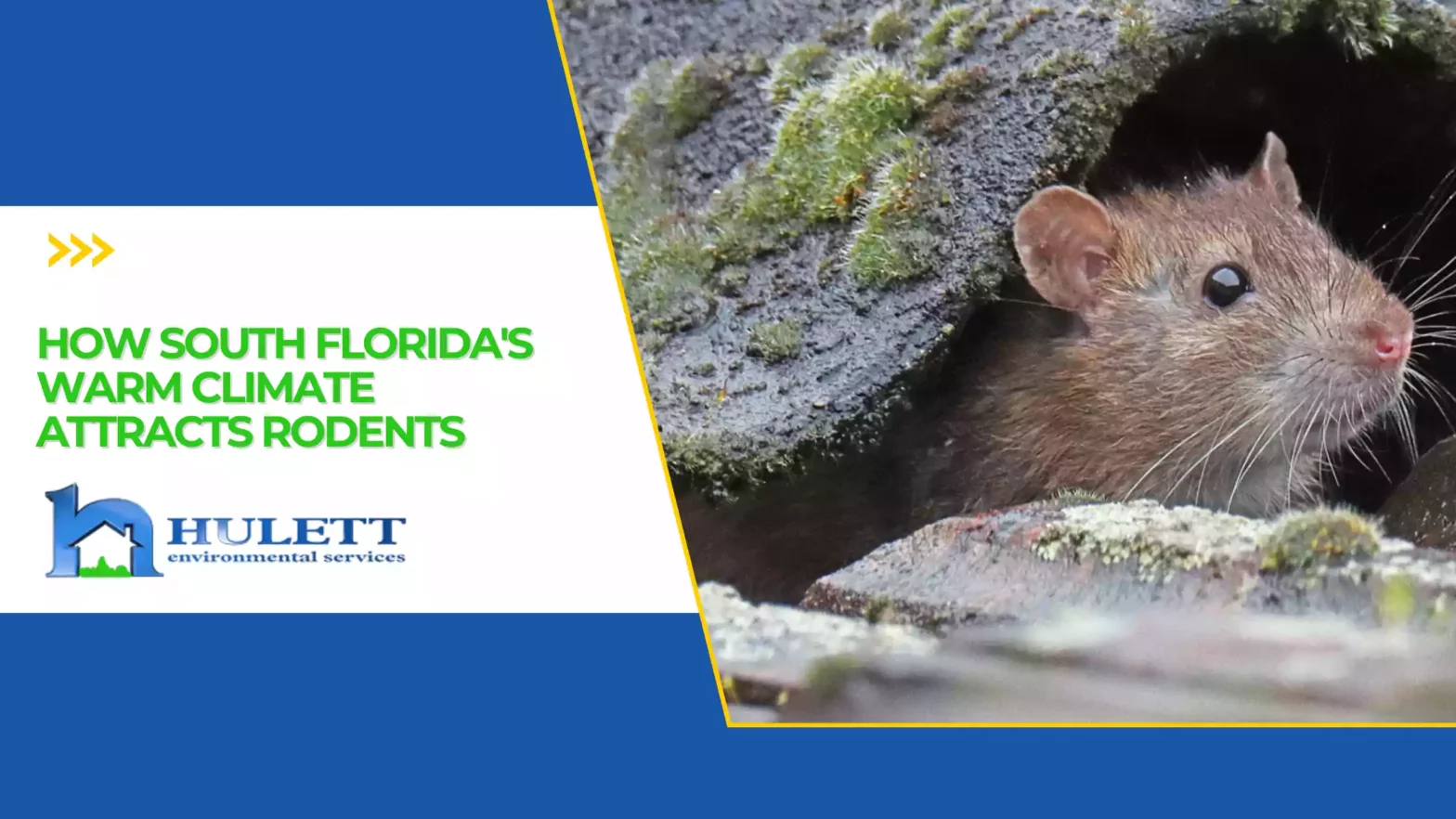
How South Florida’s Warm Climate Attracts Rodents
You’re in the kitchen preparing a meal when you hear a faint scurrying sound. It’s coming from behind the oven. A sinking feeling hits—what was that? Was it a rat or a mouse? Is it in the oven, under it, or maybe even in the walls? And if you heard one, are there more? It’s like the worst version of Ratatouille—instead of a cute chef in your kitchen, you’ve got a growing rodent family making themselves at home!
Dealing with rodents can be overwhelming, especially with so many unknowns. That’s why we’re here to clear up the mystery surrounding rodents, from how to identify different species to when they are most active and why South Florida’s warm climate is so appealing to these pests. This blog will help you know when to reach out to a rat exterminator near you.
Understanding Rodent Control in Florida’s Climate
The majority of Florida falls into a humid subtropical zone, which means hot, humid summers and mild winters where snowfall is nearly unheard of. With average yearly temperatures hovering between 75° F – 80° F, and even warmer in the summer, South Florida’s consistent warmth is not just ideal for rodents but nearly all pests. Our state’s proximity to the ocean only adds to this, with frequent rain and high humidity levels that offer plenty of moisture for wildlife, especially rodents, to thrive.
Southern Florida, including the diverse climates and habitats Lake Okeechobee, the Everglades, and plentiful agricultural land, this takes things a step further, boasting more diverse climates such as tropical savanna, rainforest regions, and true tropical climates like found in the Keys. These environments are slightly warmer and wetter than the subtropical areas, creating ideal conditions for roof rats, Norway rats, black rats, fruit rats, palm rats and common house mice to flourish. In these hot and humid regions, the lush vegetation and steady temperatures make it easy for rodents to find shelter and food year-round, allowing their populations to grow quickly.
These rodents are referred to as “Commensal”, meaning they also thrive in urban areas near human habitats where they can easily find shelter, food, and water. The abundant population in Palm Beach County and the Treasure Coast creates ample opportunities for rodents to live in our homes and businesses.
Climate vs. Weather: What’s the Difference?

This distinction matters because rodents in South Florida are influenced by both. The warm, steady climate gives them the environment they need to breed and thrive over time, while specific weather conditions, like a heavy rainstorm, or a cold front, may drive them indoors in search of shelter. Understanding these patterns helps our experts predict rodent activity throughout the year, allowing us to better prepare for and better address rodent infestations.
Types of Rodents in Florida
Rodents have been part of Florida’s ecosystem for millennia. Indigenous species existed long before European settlers arrived in the late 15th century. However, with these settlers came Old World rodents like house mice and Norway rats, which stowed away on ships, hiding in barrels and between the wooden planks.
As Florida’s population grew, so did the rodent population, along with the types of rats and mice. These creatures are highly adaptable and have long been scavengers, thriving on human food waste. Over time, they’ve evolved alongside us, taking advantage of our homes, offices, and cities as prime nesting sites. This long-standing relationship with humans has made it easier for them to invade our spaces, especially in areas where the climate is consistently warm and food is plentiful, like South Florida homes.
Why Rodents Invade Homes

At their core, rats and mice are sneaky little scavengers, always on the hunt for easy meals. And let’s face it, our homes offer a gold mine of poorly secured food that’s basically an all-you-can-eat buffet for them. Whether it’s crumbs on the floor or improperly stored goods in your pantry, rodents will find a way to make the most of it.
Beyond food, rodents are burrowers by nature, and nooks and crannies of your home, especially behind appliances or in your attic, make for perfect nesting spots. They often use insulation—like the pink or yellow fiberglass fuzz inside your walls—to line their nests, a sign that rodents may be nearby. If you spot bits of this material around your house with droppings nearby, it could mean rats or mice have already made themselves at home.
Their teeth are another major advantage. Rats and mice have self-sharpening teeth that never stop growing, and they use them to chew through anything from wood to food packaging. These teeth are yellow due to a high concentration of iron, giving them the strength and sharpness needed to chew through walls, wires, and even metal, which can be a hazard if rodents chew through electrical or water lines, creating a fire hazard or water damage.
Differentiating Rats, Mice, and the Damage They Cause
While rats and mice may seem pretty similar at first glance, there are a few key differences you can spot between them—both in appearance and in the damage they cause. Mice are typically smaller, with larger ears and a more skittish behavior. Rats, on the other hand, are larger, more aggressive, and can do a lot more damage due to their size and strength. Both breed quickly and prefer to nest in dark, hard-to-reach places.
In South Florida, palm tree rats are a particularly common species found. Also known as roof rats, these rodents are excellent climbers, often making their nests in trees, especially fruit trees or palm trees, which is where their name comes from. They are slim, agile, and notorious for nesting in dense foliage and homes with plenty of vegetation.
Both palm rats and other rodents are avid chewers, and their continuously growing teeth mean they’re always gnawing on something to keep them sharp and manageable. This chewing behavior can lead to significant structural damage, and rats, particularly larger species like Norway rats, can chew through wood, drywall, and even softer metals like aluminum. Once inside, their droppings and urine can leave unpleasant smells and permanent damage on counters and upholstery. Even worse, when they get into your food, they can leave behind contaminants that could lead to serious health risks.
When To Call in the Experts
DIY methods, like rat traps and mouse traps, may catch a rodent or two, but they often fail to address the root of the problem. Left unchecked, mice and rats can spread diseases from rodents throughout your home. In some cases, they reproduce faster than you can trap them, quickly turning a small issue into a full-blown infestation.
Sometimes, even the most thorough cleaning and sealing can’t keep rodents away. That’s where Hulett Environmental Services comes in. Hulett is your local pest and rodent control experts and can help protect your home or business with rodent proofing to exclude entry points, exterior rodent baiting to reduce your chances of infestation, and specialized trapping to eliminate any infesting rodents. Our Healthy Home Guarantee means we don’t just take care of the pests you see, but we also tackle the ones hiding deep in your walls, attic, and other hidden areas. If rodents return, so do we—until your home is back to being the secure and healthy environment you deserve.
If you have rodents in your home or are concerned about the risk of infestation, just call Hulett! We’ll work with you to create a same-day residential pest control plan that keeps you protected from all varieties of rodents throughout the year.
Reach out over the phone or schedule your inspection today.



